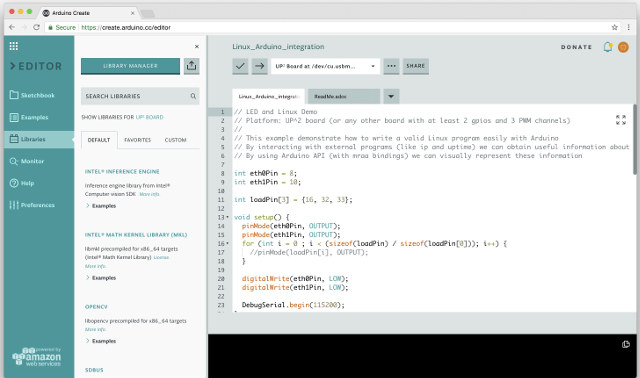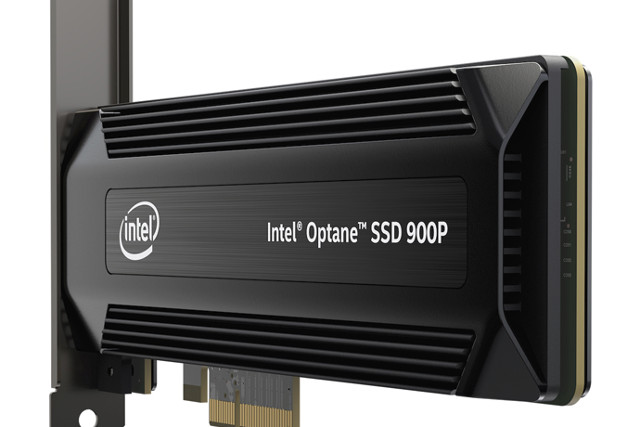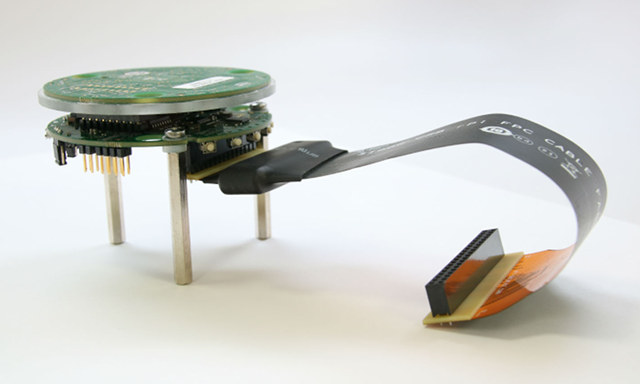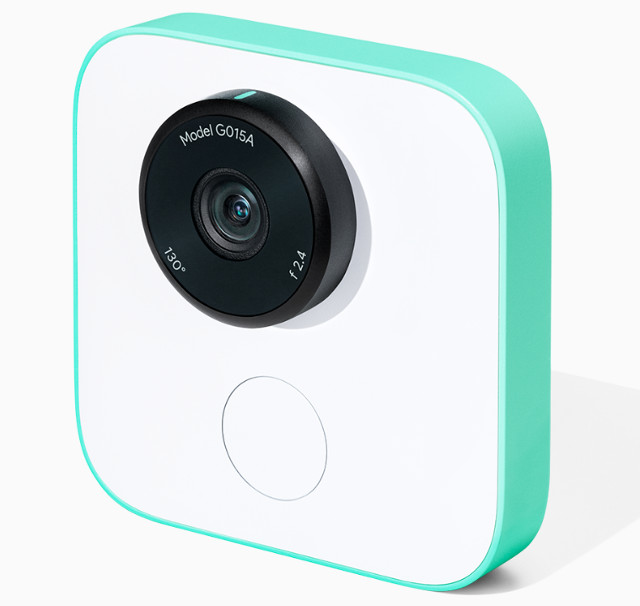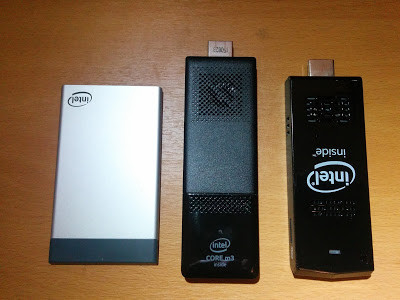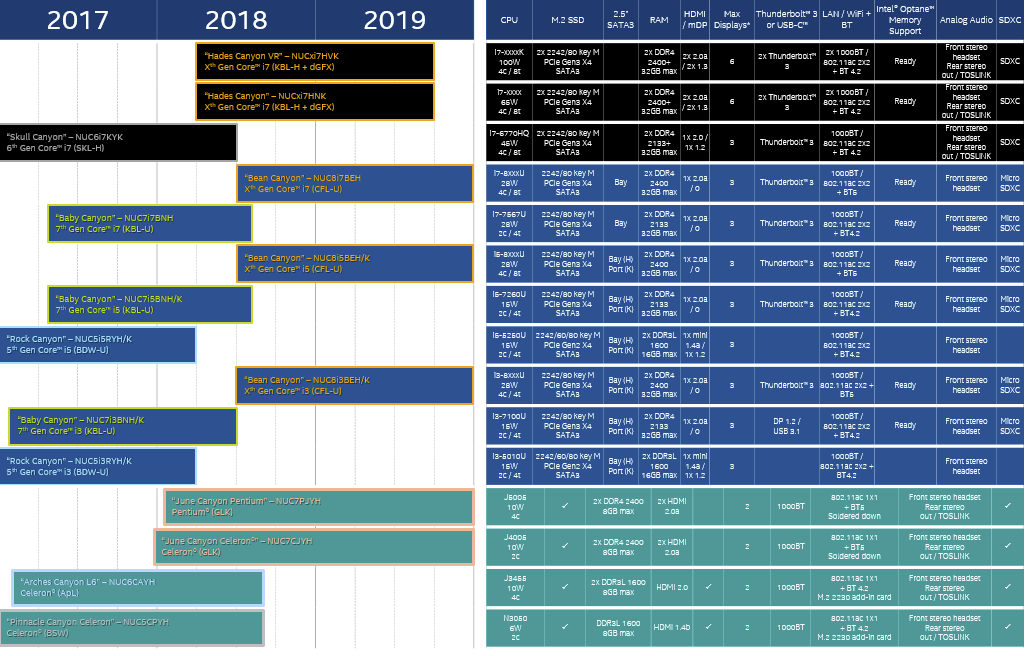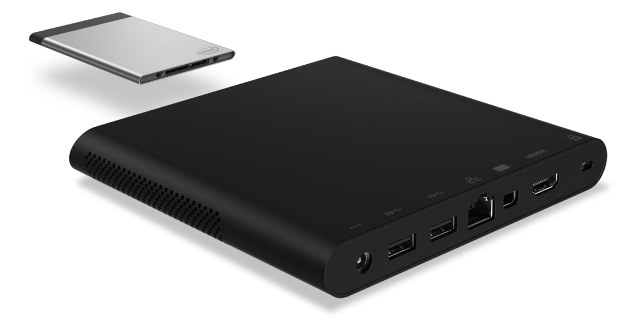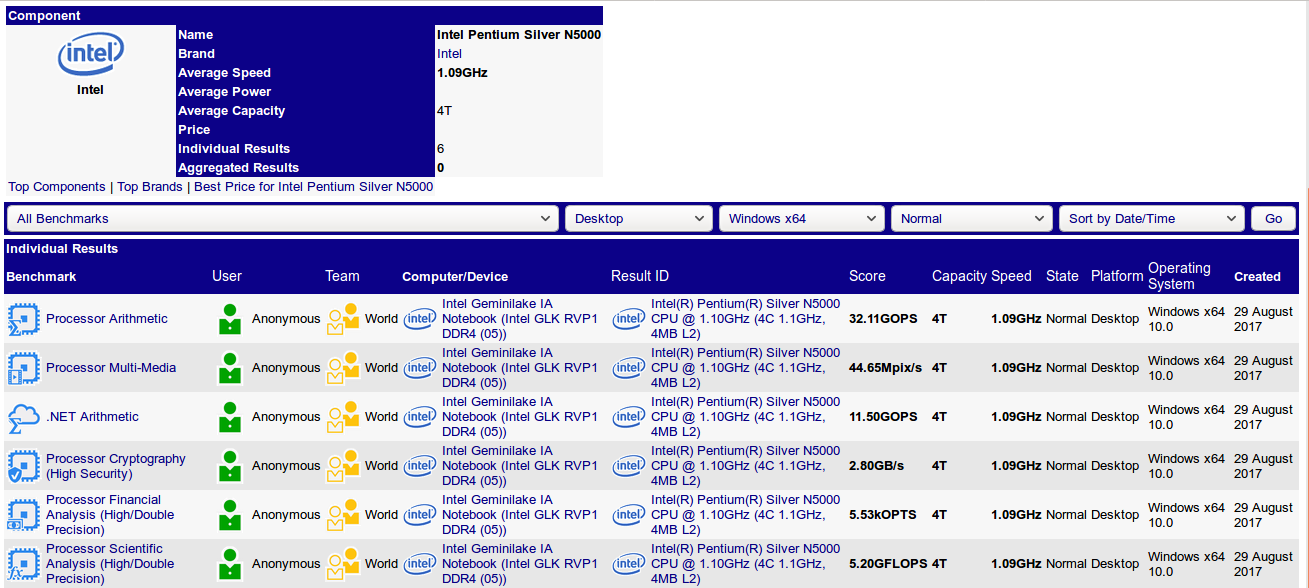Most people are used to program Arduino compatible boards with the Arduino IDE that they’ve installed in their Windows/Linux/Mac OS computer, and manage everything locally. But Arduino introduced Arduino Create last year, which includes Arduino Web Editor allowing you to perform the same tasks in your web browser, and save your files in the cloud. The company has now added Linux support to Arduino Create so that users can now program their Linux devices as if they were regular Arduino boards, and easily deploy IoT applications with integrated cloud services. The initial release has been sponsored by Intel, and currently supports X86/X86_64 boards, but other hardware architectures will be supported in the coming month. In the meantime, AAEON UP2 board is the best platform to get started, as a complete getting started guide is available for the platform. But other mini PCs such as Intel NUC, Dell Wyse, Gigabyte GB-BXT are […]
Intel Optane 900P Series SSD Launched for Desktop PCs
Intel and Micron first unveiled 3D Xpoint technology (pronounced “crosspoint”) in 2015 with the promise of 1000x faster storage and 1000x better endurance than NAND flash used in SSDs. Performance was later reduced to about 7x better IOPS in a prototype, and Intel started to sell the technology under the Optane brand with the 375GB SSD DC P4800X for the enterprise market. Since then Intel entered the consumer market with 16GB and 32GB Optane M.2 cards which are meant to be used as disk cache in compatible systems thanks to their high random I/O performance, and now the company has announced the first consumer grade 3D Xpoint SSDs for desktops and work stations with Optane 900P Series available in HHHL (CEM3.0) and U.2 15mm form factors, and with random I/O performance up to four times faster than competitive NAND-based SSDs. Optane SSD 900P Series specifications: Capacity – 280 to 480 […]
Intel Speech Enabling Developer Kit Works with Alexa Voice Service, Raspberry Pi 3 Board
We’ve known Intel has been working on Quark S1000 “Sue Creek” processor for voice recognition for several months. S1000 SoC is based on two Tensilica LX6 with HiFi3 DSP, some speech recognition accelerators, and up to 8x microphones interfaces which allows it to perform speech recognition locally. The solution can also be hooked to an application processor via SPI, I2S and USB (optional) when cloud based voice recognition is needed. Intel has recently introduced their Speech Enabling Developer Kit working with Amazon Alexa Voice Service (AVS) featuring a “dual DSP with inference engine” – which must be Quark S1000 – and an 8-mic array. The kit also includes a 40-pin cable to connect to the Raspberry Pi 3 board. Intel only provided basic specifications for the kit: Intel’s dual DSP with inference engine Intel 8-mic circular array High-performance algorithms for acoustic echo cancellation, noise reduction, beamforming and custom wake word […]
Google Clips is an A.I. Camera Powered by Movidius Myriad 2 VPU
Most consumer cameras offers some ways for the photographer to check the framing of the picture, such as a viewfinder or LCD display, before pressing the button. The first time I saw a consumer camera without such features was with MeCam, a tiny snap-on camera that you can wear on your shirt, and just press a button to take a picture. Convenient, but no ideal as subjects were often out of frame with the camera pointing at the wrong angle. That was in 2013. But today, those cameras can be improved with artificial intelligence, and Google Clips is a camera without viewfinder nor LCD display that can allegedly take good photos – or short clips – automatically, acting in some ways like a human photographer, so that every human in the room / the whole family can be on the shot. Google Clips specifications: Vision Processing Unit – Movidius Myriad […]
Intel Compute Card and Dock Hands On, Windows 10 and Ubuntu Benchmarks
We’ve recently seen Intel introduced Dock DK132EPJ for their Compute Cards, and released some pricing info. Ian Morrison (Linuxium) got sent a full kit by Intel with the dock and Compute Card CD1M3128MK powered by a dual core / quad Core m3-7Y30 processor with 4GB RAM, 128GB PCIe SSD, and Intel Wireless-AC 8265 module. You can get the full details in Ian’s post, but I’ll provide a summary of the key points here. While the compute card and dock are thinner than most product, the computer card is quite wider than TV sticks, and the dock larger than an Intel NUC. It also comes with a fan, and cooling works well with maximum CPU temperature under being 70°C. The Compute Cards do not come with any operating system, but you get to the BIOS easily, and install Windows or Linux distributions. Ian’s started with Windows 10 Enterprise Evaluation, and ran […]
Intel NUC Roadmap 2018 – 2019 – Gemini Lake, Coffee Lake, and Kaby Lake H
Intel’s new generation of Gemini Lake and Coffee Lake processors is expected to launch at the end of this year, beginning of next, and this morning I received Intel’s NUC roadmap that gives a good idea of what’s coming in 2018 and 2019. Intel plans a whole new generation of NUCs from “Hades Canyon VR” NUCxi7HVK model with a 100W Intel Core i7-xxxxK Kaby Lake-H processor to “June Canyon Celeron” NUC7CJYH model with a 10W Intel Celeron J4005 dual core “Gemini Lake” processor. All in all a total of 7 new NUCs should be launching in 2018. Let’s have a closer look at the cheaper and lower power Gemini Lake models, starting with “June Canyon Celeron” NUC7CJYH specifications: SoC – Intel Celeron J4005 dual core GLK processor (10W TDP) System Memory – 2x DDR4-2400 slots for up to 8GB RAM Storage – M.2 SSD slot, SDXC slot Display – 2x […]
Intel Compute Card Dock DK132EPJ Specifications and User Manual Published
Intel unveiled the Compute Card at the very beginning of the this year, without that many details, except it would included a 7th Gen Intel Core, memory, storage and wireless connectivity, and connect compliant dock with a new standard connector featuring USB-C and extra I/Os. Later this year, we learned more details about some Apollo Lake and Kaby Lake Compute Cards including specifications and block diagram. However those cards won’t be of any use without docks, and while NexDock promised a laptop dock for the cards, I have not seen any other announcements, but we now have some info about Intel’s own Compute Card dock that looks like a mini PC as the company released technical specifications and user manuals for DK132EPJ dock, and three Compute Card SKUs. Intel Compute Card Dock DK132EPJ specifications: CPU, Memory, Storage, Wireless – Via slot supporting certified Intel Compute Cards Video Output – HDMI and […]
Intel Pentium Silver N5000 “Gemini Lake” Notebook Shows Up in Benchmarks
We all know that Gemini Lake processors will succeed Apollo Lake family, we have a good idea of the supported features. and even know that Intel is expecting 10 to 15% CPU integer performance improvement between the two generations. I’ve now been informed that an Intel Gemini Lake notebook powered by Intel Pentium “Silver” N5000 quad core processor clocked at 1.09 GHz was spotted in SiSoftware Sandra benchmark database. If we compare those results to the ones for Intel Pentium N4200 Apollo Lake processor with the same 1.1 GHz base frequency, we can indeed see some progress, and the results, albeit early, are quite encouraging, except for the GPU part with similar results. Intel Pentium N5000 Intel Pentium N4200 Delta Processor Arithmetic 31.11 GOPS 21.42 GOPS 1.45x Processor Multi-Media 44.65 MPix/s 41.38 MPix/s 1.08x .NET Arithmetic 11.5 GOPS 7.31 GOPS 1.57x Processor Crypto 2.8 GB/s 1.41 GB/s 1.99x It’s quite […]


